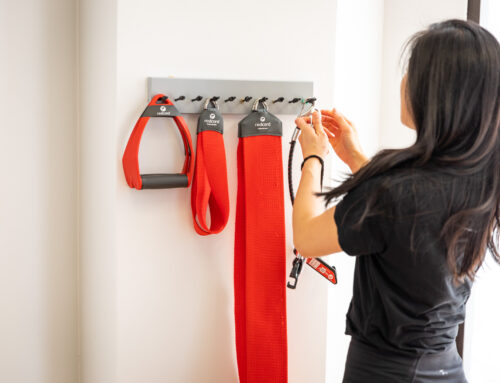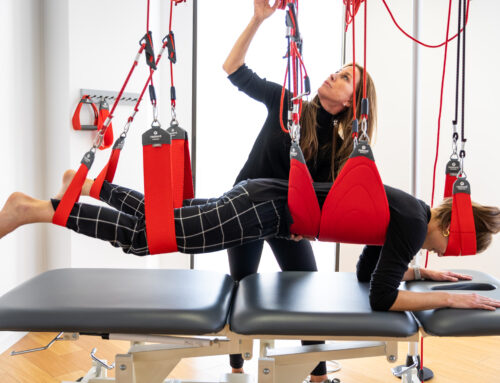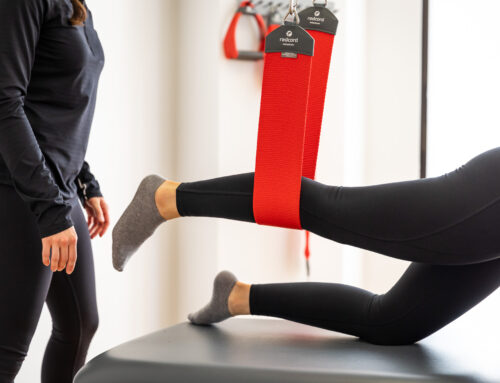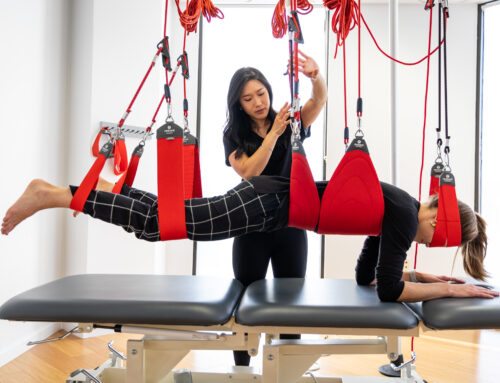Strength training often combines closed-kinetic-chain exercises (CKCEs) and open kinetic-chain exercises (OKCEs). The CKCE may be more effective for improving performance in lower-body training.
Recently, we reported upper-body CKCE (using a commercially available system of ropes and slings, Redcord AS, Staubo, Norway) was as effective as OKCE training for strength gains and that CKCE was more effective than OKCE for improving throwing performance. To our knowledge the effectiveness of a strength training program that uses exclusively CKCE is unknown.
In this study, we examined the effectiveness of CKCE vs. OKCE strength training programs in women enrolled in an introductory strength training program. Twenty-six participants were randomized to OKCE (traditional exercises) or CKCE (sling-based exercises). Participants completed 6 sets per week for 13 weeks.
Pre and posttraining evaluations included the following: 1 repetition maximum (1RM) leg and bench press; sling exercise push-ups; isokinetic dynamometry; lateral step-down test; and the Star Excursion Balance Test. Both groups significantly improved bench press (by an average of 4–6 kg) and leg press (by an average of 23–35 kg) (p , 0.001). There was a significant group 3 time interaction (p , 0.001) for sling exercise push-ups (OKCE pre = 5.5 6 8.6, OKCE post = 6.1 6 8.2, CKCE pre = 6.8 6 6.0, CKCE post = 16.9 6 6.6). Isokinetic measures of knee extension, knee flexion, shoulder internal rotation, and shoulder external rotation increased (improvements ranged from 2.7 to 27.7%), with no group differences. Both OKCE and CKCE strength training elicited similar changes in balance.
We conclude that CKCE training is equally as effective as OKCE training during the initial phases of a strength training program in women. The fact that only CKCE improved sling exercise push-ups supports previous findings suggesting functional superiority of CKCE.
KEY WORDS: closed-kinetic chain, open-kinetic chain, Redcord, 1RM, isokinetic dynamometry, balance





